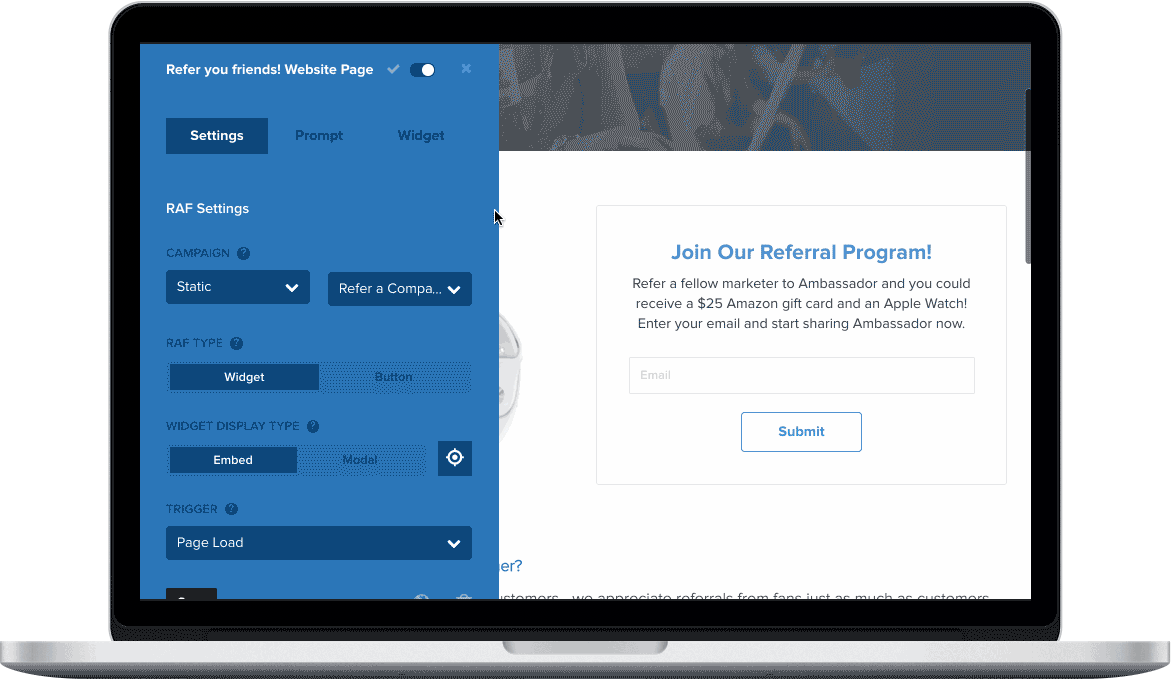Are you trying to get a referral marketing campaign off the ground? Or perhaps your brand is already running a referral program, but it’s getting tough to manage the process with spreadsheets and post-it notes. With word-of-mouth marketing driving billions of dollars in spend annually, it’s no shock that more and more marketers are looking to put a referral marketing program in place.
What’s surprising is just how many thriving brands are sticking to a pen-and-paper approach for managing customer recommendations even though the consumer economy is getting more digital by the day.
Referral marketing automation is key for brands that are looking to scale this customer acquisition channel.
Manual referral programs, in the B2B sector or eCommerce industry, simply can’t scale. Here’s a generalized scenario similar to numerous cases we’ve seen: A marketing team looking to ramp up referral customers launches a brand ambassador program to reward their loyal customers who are referring the brand to their networks. The brand sends coupons, swag, even cash rewards in exchange for purchases made via referrals. The marketing team promotes the program on their website, tracks ambassador activity on a spreadsheet, prints out coupons, mails out swag, and sends out payment to those who qualify.
At first, there are only 50 brand ambassadors, so it is a relatively easy task. As the program grows, there are quickly 500-1000 brand ambassadors joining monthly. Now the time commitment for the marketing team is increasing and other core marketing functions are suffering.
The team is spending time manually segmenting their database, confirming contact information, mapping share links to purchases, then manually creating and distributing rewards. Not only is this an inefficient use of time and resources, but this approach offers no real way to monitor and optimize success.
If you’re nodding your head along to this scenario, you’re probably ready to take the leap from a manual to an automated referral marketing program.

6 Steps to Creating a Successful Referral Marketing Campaign
1. Plan Your Incentive Structure
At this stage, it’s important to develop an incentive structure that reflects your company’s goals. In order to create the right incentive structure, you’ll have to select the correct form and flow of your rewards. There are a few ways to do this:
Monetary vs. Non-monetary Rewards
Monetary rewards have a direct cash value, so it’s the most straightforward form of rewarding. Non-monetary rewards are a more unique form of rewarding since there is no direct monetary value. These rewards are often delivered via early access, loyalty points, and swag.
Single vs. Double Incentive
Companies that follow a single incentive structure only reward the referring party. With double incentive structures, both the referrer and the referred customer are rewarded.
Companies must fine tune their referral program to find a valuable, compelling and easy-to-maintain incentive structure. And for good reason, strong incentives are proven to drive more sharing through your ambassador network.
2. Customize Your Referral Campaign
Infuse your referral campaign with recognizable elements of your brand. From targeted emails and registration forms to login pages and refer-a-friend widgets, keep the look and feel of your referral program consistent with your brand. Members of your program should never feel as though they are leaving your brand experience.

Ambassador’s visual editor empowers marketers to make real-time referral campaign updates.
3. Enable Tracking and Rewards
Now that you’ve built a branded campaign, it’s time to start tracking referrals and issuing rewards. By selecting a platform that syncs with your existing marketing technologies, maintaining a simple payout system, and allowing for efficient communication with advocates, your program becomes easily scalable and provides data for optimization.

4. Test and Test Again
Like with any marketing campaign, a simple misstep can disrupt your entire seamless process. Before going live, be sure to test the fundamental parts of your campaign. Pay special attention to components like emails and shareable URLs that are crucial to your ambassadors’ success. Set up a generic profile to experience your referral email as a customer would. Are there any typos? Are referral instructions and next steps clearly expressed? Does the URL direct ambassadors to the correct page?
5. Invite Ambassadors
Now that you’ve built and designed a unique referral campaign, you’ll want to tell everyone about it. There are a few strategic ways to extend an initial referral campaign invitation.
You can import contacts from your existing database and auto-enroll them in your referral campaign. You can paste a link to your portal on social media pages. You can add the refer-a-friend widget to your website homepage. You can email or text a custom link to select contacts and invite them to join.
No matter the method, ensure that your referral campaign is an easily accessible and intuitive component of the buyer’s journey.
6. Continuous Improvement
You’re almost there! But referral success doesn’t stop at building and promoting your referral marketing program. The only way to truly perfect your referral marketing strategy is to optimize your program.
Referral marketing isn’t a standalone strategy, it is intended to blend into the rest of your marketing experience. One of the major benefits of optimization is being able to make real-time edits in response to sharing behavior and company goals.
Whether that means targeting a new segment or starting from scratch with a new campaign, referral success is rooted in proactively seeking the most inviting and compelling methods for your users.
Key Considerations for Launching a Successful Referral Program
When launching a referral program, it’s crucial to design an incentive structure that resonates with your audience. The rewards you choose should not only motivate participants but also align with your brand’s goals. Whether you opt for monetary rewards, exclusive perks, or a combination of both, ensure that the incentives are compelling enough to encourage active participation. Additionally, consider implementing a tiered rewards system to incentivize higher engagement levels, offering more substantial rewards for those who bring in multiple referrals.
Another important aspect is the seamless integration of the referral program into your overall customer experience. The referral process should be intuitive and straightforward, making it easy for customers to participate and share with their network. Automation tools can be invaluable here, enabling you to manage referrals efficiently and track their performance in real-time. By ensuring that the referral program is user-friendly and well-integrated, you can maximize participation and drive better results for your campaign.
Congratulations! You’re on your way to launching a successful referral marketing program. Your referral marketing program does more than give your customers a place to talk about your brand, it’s an innovative way to blaze a new trail for new revenue and quality leads. With continuous optimization and targeted outreach, you’ll start seeing referrals flood in in no time.
Unlock growth with referrals—request your free Ambassador demo today and see the impact firsthand!
